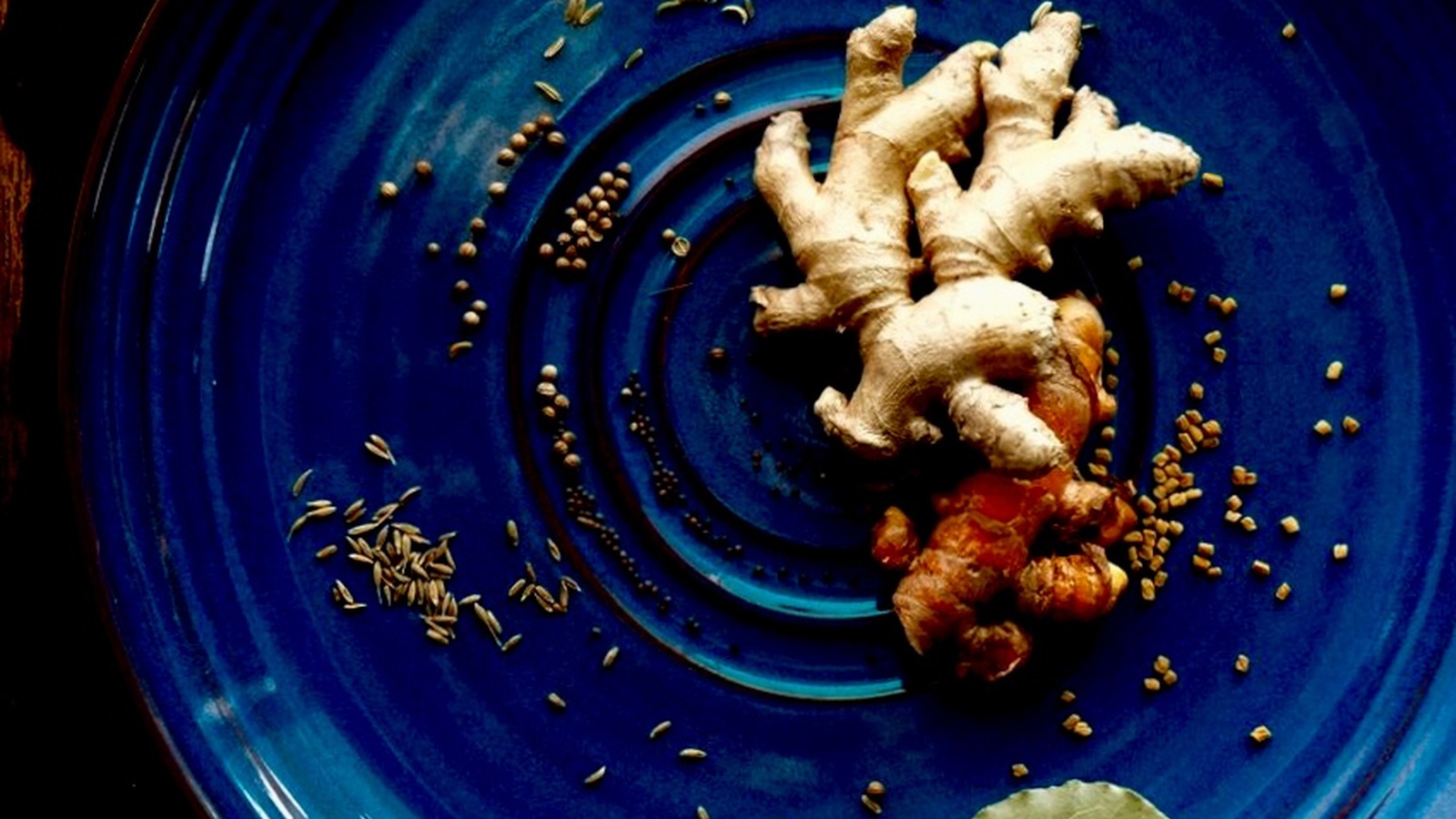Ayurveda and Fall: How To Cleanse For The Season According To An Ancient Practice
Eating in line with Nature provides us with everything we innately need to navigate a season. In summer for example, juicy melons provide a cooling effect to our bodies as the high water content and electrolytes provide the replenishing nutrition we need during this time to counteract the heat. During Fall as the seasons dry and cool, we may find ourselves craving more grounding and warming foods like squash and root vegetables rather than a cold green juice. It’s when we disregard these natural changes or live out of line with Nature’s cycles when we may find ourselves feeling out of balance as well.
According to Ayurveda, Fall is ruled by Vata, or the air element. A sometimes turbulent and colder, drier season when we, too, feel the need to reflect, slow down, cleanse, or make changes for the colder months ahead. It is a time when we look inward, contemplate, and comfort our bodies and emotions to combat the ups and downs of these transient months. Though we may feel the need to cleanse our bodies and minds, it is important to do so in a way that soothes our more reactive bodies and not fight against the season.
During this time our bodies are more sensitive and require a gentler approach vs the rest of the year. We may experience drier or irritated skin, redness and inflammation, dandruff, stomach upsets, irregularity, and stagnation. We tend to be a little bit more protective, emotional, and moody as we navigate the season. A typical juice cleanse of raw produce is too abrasive and cooling. Instead, we need to work with the heavier energy and incorporate these grounding foods into a cleansing yet still detoxifying approach.
7 Ayurvedic Tips For Cleansing With Fall
Eat With Nature
While we may not have to sustain ourselves on root vegetables and stews, a shift is still occurring and it is important that we acknowledge this change in our bodies and surroundings and make even the smallest of changes in order to move through these months with ease. Perhaps it’s simply eating more in line with the seasons, consuming warm sautéed greens versus cold salads, or substituting cooling juices for hot herbal teas. Head to your local farmers' market to see what’s in season in your area and let the fresh produce be your guide for meal inspiration.
Spice It Up
Even raw diets benefit from the practice of adding warmth through the energetics of foods. Spices like ginger and turmeric create a warmth in the body, even when consumed raw. Adding these and other spices like cinnamon, cardamon, curries, and black pepper can help to warm and also promote digestion. In the same regard, stay away from overly cooling foods and chilled beverages that interfere with digestion.
Cooked Cleanse
Although it is common practice, a raw, liquid cleanse of raw juices is counterintuitive to the season. In Ayurvedic practice, a heartier cooked cleanse, incorporating kitchari, or a simple and balanced vegetable stew is common. The stew is made of protein-rich dal or split lentils, basmati rice, and warming spices, and eaten throughout the day, supporting the body in the colder months while still gently and effectively detoxifying the system. Even if you decide to go a route that doesn’t include kitchari, aim to include easy to digest, nourishing and warming foods like bone broths, steamed vegetables, and soups.
Listen To Your Body
It may take a little practice to tap back into our innate ability to hear to what our “gut” is saying, but once we tune in, this gift can easily help us plan for what supports our system based on the season. When it comes to hunger, often there is also a large emotional aspect which we disregard. If cleansing to lose weight, tune in to what the body really needs; often it is linked to an emotional craving we may not be satisfying.
Time Of Day
As the length of daylight shortens, our bodies also feel the need to rest earlier. Aim to eat most of your calories early on in the day or mid-day when your digestive fire is strongest, and allow dinner to be a smaller, lighter meal consisting of easier to digest stews, perhaps. There is no reason to consume three meals a day, either. Consider your cravings and your schedule, and find a Fall routine that works best for you. Do aim to make your last meal at least 2-3 hours before bedtime to ensure proper digestion.
Fatten Up
Often during the Fall and Winter months our bodies require a little extra lubrication, inside and out. Ayurveda incorporates the use of ghee, a clarified and often lactose-free butter that is actually quite cleansing and restorative to the system. Ghee gently pulls fat-soluble toxins from the body, soothes the nervous system, and eases digestion. Ghee or other oils such as sesame or coconut oil may be used externally to help the body maintain moisture and protect it from the dry and harsh elements. Try adding these oils to a warm bath, or pre-shower if you have especially reactive skin.
The SImple Things
Cleansing is as much about what you exclude from your diet as it is about what you do consume. During the fluctuating weather of Fall when we are especially vulnerable to catching colds, it can be beneficial to eliminate foods that have congesting properties or create potential allergic responses in the body. With the exception of ghee, attempt to eliminate all dairy, meat and animal products, sugars (especially refined sugars), alcohol, caffeine, and processed foods from the diet for a period of about two weeks to see a substantial cleansing affect.











